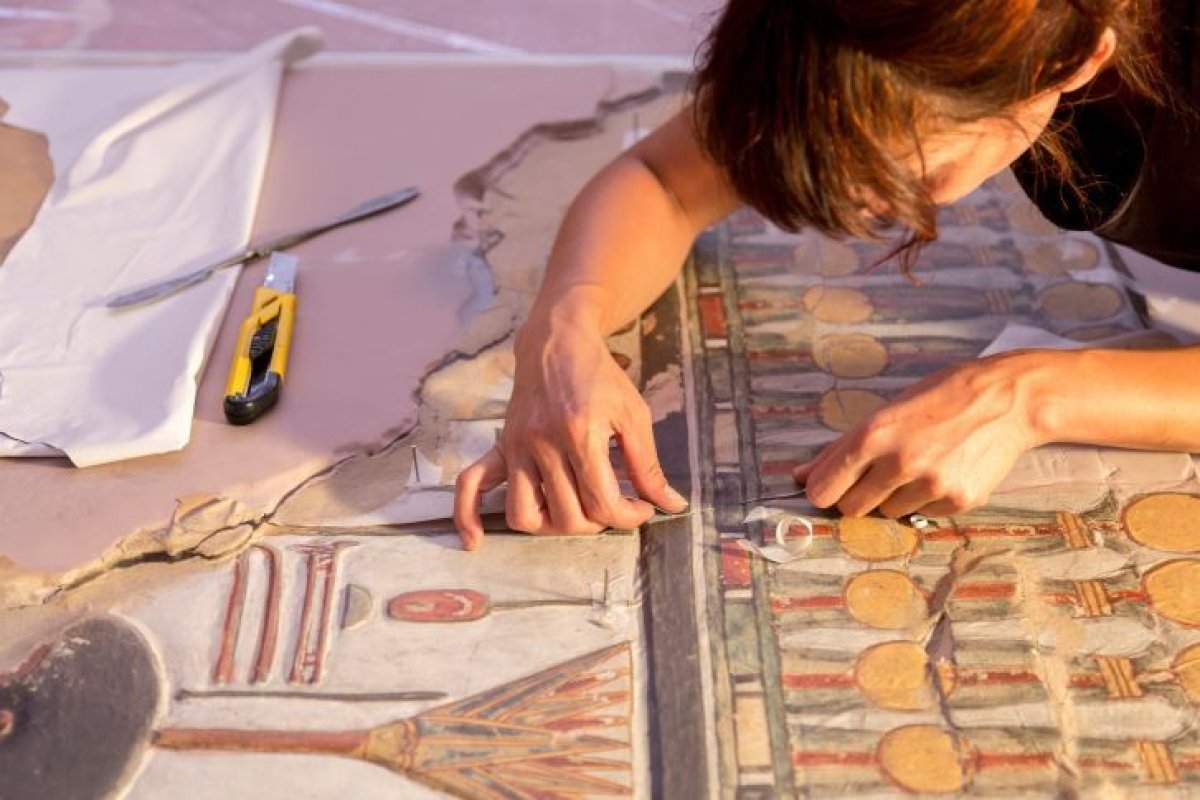
Using a 3-D printer, archaeologists and artists collaborated to render a perfect replica of the tomb of Egyptian Pharaoh Seti I—from more than 2,000 miles away.
Working from Switzerland, art company Factum Foundation for Digital Technology in Conservation has already scanned and printed the tomb's first two chambers. They're currently on display at the Antikenmuseum Basel, in Switzerland, in an exhibit titled "Scanning Seti: The Regeneration of a Pharaonic Tomb." The exhibit includes a precise replica of the 3,300-year-old royal sarcophagus. The Factum Foundation team will be spending the next five years recreating the tomb in its entirety.
The tomb of Pharaoh Set I is the most impressive in Egypt's famous Valley of the Kings. Adam Lowe, co-founder and director of Factum Arte (Factum Foundation's sister company) told CNN he considers it "the most important library of Pharaonic religion, philosophy, art, poetry and science; the source material for the three Abrahamic religions." He's had his eye on printing a 3-D replica for more than 15 years. His team is training Egyptian colleagues to use the 3-D scanners as well; he described the mission of recording Middle Eastern archaeology in this manner as "a real imperative."

Using photogrammetry, the process of extrapolating measurements from photographs, the team was able to recreate the chambers to scale without ever actually looking at it. They also gathered data from portions of the chamber that are on display at museums such as the Louvre, and used a 3-D survey of the tomb walls. They even pulled details from watercolors rendered by Italian explorer Giovanni Belzoni, who rediscovered the tomb in 1817.
The two chambers already printed are known as the Hall of Beauties and, right next to it, the Pillared Room. They've been recreated in their current state, which is damaged and looted. But as reported by CNN, Factum Foundation also created a second version of Hall of Beauties, in which it appears as it did 200 years ago. In pristine condition at the time (though long since looted) it has suffered from botched excavations and lax restrictions on tourism ever since. Museum-goers can now see minute etchings in the alabaster of the sarcophagus, and even one of the sky goddess Nut.
"This is resurrection!" Susanne Bickel, an Egyptologist at the University of Basel who's worked with the original Seti tomb, told CNN. She expressed confidence the replicas would be educational "without becoming Disneyland or kitsch."
The museum exhibit will run until May 2018.
Uncommon Knowledge
Newsweek is committed to challenging conventional wisdom and finding connections in the search for common ground.
Newsweek is committed to challenging conventional wisdom and finding connections in the search for common ground.
About the writer
Kastalia Medrano is a Manhattan-based journalist whose writing has appeared at outlets like Pacific Standard, VICE, National Geographic, the Paris Review Daily, ... Read more
To read how Newsweek uses AI as a newsroom tool, Click here.








